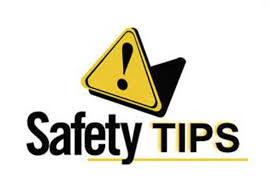 The American Red Cross urges everyone to stay safe and stay at home if possible, and offers these steps to prepare for power outages and the potential for frozen pipes:
The American Red Cross urges everyone to stay safe and stay at home if possible, and offers these steps to prepare for power outages and the potential for frozen pipes:
Use flashlights in the dark — not candles.
If you must go out during a winter storm, use public transportation if possible. Eliminate unnecessary travel, especially by car. Traffic lights will be out and roads will be congested.
Turn off and unplug all unnecessary electrical equipment.
Turn off or disconnect any appliances and electronics that you were using when the power went out. When power comes back on, surges or spikes can damage equipment.
Leave one light on, so you’ll know when power is restored.
During a prolonged outage, keep refrigerator and freezer doors closed as much as possible to protect your food.
First, use perishable food from the refrigerator. Perishables are safe to eat when they have a temperature of 40 degrees Fahrenheit or below. Then, use food from the freezer.
If the power outage will continue beyond a day, prepare a cooler with ice for your freezer items. Keep food in a dry, cool spot and cover it at all times.
Keep garage doors closed if there are water supply lines in the garage.
Open kitchen and bathroom cabinet doors to allow warmer air to circulate around the plumbing.
Let the cold water drip from the faucet served by exposed pipes. Running water through the pipe – even at a trickle – helps prevent pipes from freezing.
Keep the thermostat set to the same temperature both during the day and at night.
If you will be going away during cold weather, leave the heat on in your home, set to a temperature no lower than 55° F.
How to Thaw Frozen Pipes
If you turn on a faucet and only a trickle comes out, suspect a frozen pipe. Likely places for frozen pipes include against exterior walls or where your water service enters your home through the foundation.
Keep the faucet open. As you treat the frozen pipe and the frozen area begins to melt, water will begin to flow through the frozen area. Running water through the pipe will help melt ice in the pipe.
Apply heat to the section of pipe using an electric heating pad wrapped around the pipe, an electric hair dryer, a portable space heater (kept away from flammable materials), or by wrapping pipes with towels soaked in hot water. Do not use a blowtorch, kerosene or propane heater, charcoal stove, or other open flame device.
Apply heat until full water pressure is restored. If you are unable to locate the frozen area, if the frozen area is not accessible, or if you cannot thaw the pipe, call a licensed plumber.
Check all other faucets in your home to find out if you have additional frozen pipes. If one pipe freezes, others may freeze, too.
Keep all potential sources of fuel like paper, clothing, bedding or rugs at least three feet away from space heaters, stoves, or fireplaces.
Don’t leave portable heaters and fireplaces unattended. Turn off space heaters and make sure any embers in the fireplace are extinguished before going to bed or leaving home.
Place space heaters on a level, hard and nonflammable surface, not on rugs or carpets or near bedding or drapes. Keep children and pets away from space heaters.
Never use a cooking range or oven to heat your home.
Keep fire in your fireplace by using a glass or metal fire screen large enough to catch sparks and rolling logs.
DOWNLOAD APPS
Download the Red Cross Emergency App for instant access to weather alerts. Expert medical guidance and a hospital locator are included in the First Aid App in case travelers encounter any mishaps. Both apps are available to download for free in app stores or at redcross.org/apps.




